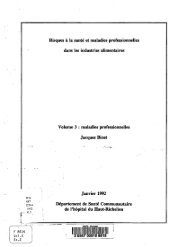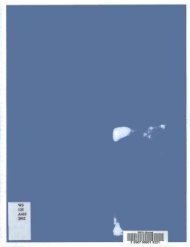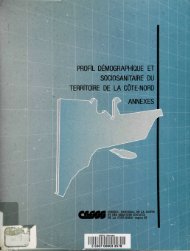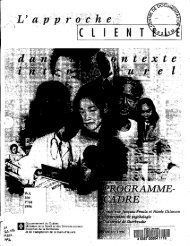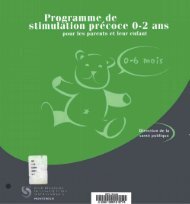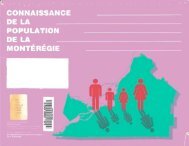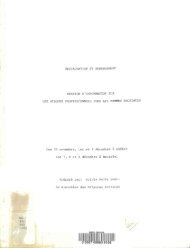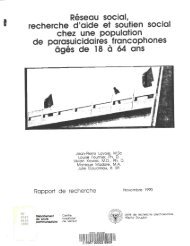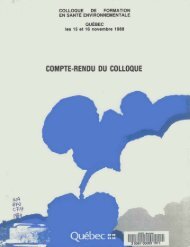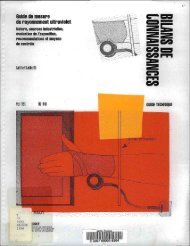le travail à l'écran de visualisation work with display units
le travail à l'écran de visualisation work with display units
le travail à l'écran de visualisation work with display units
You also want an ePaper? Increase the reach of your titles
YUMPU automatically turns print PDFs into web optimized ePapers that Google loves.
CONDUITE DE PROCESSUS INDUSTRIELS CONTINUS SUR CONSOLE CATHODIQUEC.LEJÛN, M.GUY, SETILAM, FRANCE. ETUDE MENEE POUR L'AGENCENATIONALE POUR L'AMELIORATION DES CONDITIONS DE TRAVAILIN-CAR NAVIGATION VDU SYSTEM : PSYCHO-ERGONOMIC STUDYGuy Labia<strong>le</strong>, Equipe <strong>de</strong> Psycho-ergonomie, INRETS-LEN, 109, Avenue SalvadorAl<strong>le</strong>n<strong>de</strong> - Case 24 - 69675 BRON Cé<strong>de</strong>x - FRANCELe développement, <strong>de</strong>puis lOans, <strong>de</strong> la conduite centralisée<strong>de</strong> processus industriels aur SNCC < Système Numérique <strong>de</strong> Contrô<strong>le</strong>Comman<strong>de</strong> ) met en lumière <strong>de</strong>s résultats contrastés en ce concernel'ergonomie <strong>de</strong> ces interfaces. En particulier, la gestion <strong>de</strong>sphases transitoires et inci<strong>de</strong>ntel<strong>le</strong>s, sur SNCC, peut présenter dèsérieuses difficultés pour <strong>le</strong>s équipes <strong>de</strong> conduite.Cette étu<strong>de</strong> menée par SETILAM pour l'ANACT a pour objet :1 ' i<strong>de</strong>ntification précise <strong>de</strong>s insuffisances ergonomiques <strong>de</strong>sinterfaces SNCC, afin <strong>de</strong> proposer <strong>de</strong>s améliorations applicab<strong>le</strong>saux systèmes existants, ainsi que <strong>de</strong>s perspectives d'évolutionpour <strong>le</strong>s futurs systèmes. L'étu<strong>de</strong> en cours porte essentiel<strong>le</strong>mentsur L'ANALYSE ERGONOMIQUE DE LA CONDUITE SUR SNCC EN SITUATIONREELE D'EXPLOITATION. Plus précisément <strong>le</strong>s observations sontfocalisées aur la gestion, par <strong>le</strong>s équipes postées, <strong>de</strong>s pério<strong>de</strong>stransitoires < démarrages, arrêts, inci<strong>de</strong>nts...), et cela dansune dizaine d'installations diverses, souvent critiques (pétro<strong>le</strong>,chimie, verrerie, cimenterie...), installations el<strong>le</strong>s mêmespilotées par <strong>de</strong>s SNCC <strong>de</strong> fournisseurs différents.Les principa<strong>le</strong>s insuffisances qui ressortent <strong>de</strong> cetteanalyse proviennent d'une prise en compte insuffisante <strong>de</strong>sexigences spécifiques <strong>à</strong> la conduite <strong>de</strong> processus. Cela dès <strong>le</strong>sta<strong>de</strong> <strong>de</strong> la conception, mais éga<strong>le</strong>ment au sta<strong>de</strong> <strong>de</strong> la mise enoeuvre du SNCC par l'utilisateur industriel. En effet <strong>le</strong>s Snccsont plus souvent gréffés, plutôt qu'intégrés, sur <strong>de</strong>sinstallations soit neuves soit revampées, et cela tant du point<strong>de</strong> vue technique qu'organisâtionnel..Points <strong>le</strong>s plus critiques <strong>de</strong> l'ergonomie <strong>de</strong>s interfaces SNCC :* Perte <strong>de</strong> vision dynamique globa<strong>le</strong> et synthétique du processus. morcellisation spatia<strong>le</strong> et temporel<strong>le</strong> <strong>de</strong>s informations,<strong>de</strong>s comman<strong>de</strong>s, due <strong>à</strong> <strong>le</strong>ur appel séquentiel.» Perpétuation <strong>de</strong> la conduite " sur exception".. prolifération, et hiérarchisation insuffisante <strong>de</strong>s alarmes. imagerie <strong>de</strong> conduite et architecture peu adaptée auxexigences <strong>de</strong> la conduite <strong>de</strong> processus temps réel.. possibilités limitées d'anticipation <strong>de</strong>s évolutions, et <strong>de</strong><strong>le</strong>urs répercussions sur l'amont et l'aval du processus.* Comp<strong>le</strong>xité <strong>de</strong> l'imagerie et allongement <strong>de</strong>s dialogues.. hétérogénéité et incohérences dans <strong>le</strong>s codifications(cou<strong>le</strong>urs, symbolismes...), el<strong>le</strong>s mêmes peu fonctionnel<strong>le</strong>s.» Iso<strong>le</strong>ment <strong>de</strong> l'opérateur face <strong>à</strong> <strong>de</strong>s conso<strong>le</strong>s peu adaptées <strong>à</strong> laconduite multi-opérateur.* Hétérogénéité <strong>de</strong>s systèmes <strong>de</strong> contrô<strong>le</strong> comman<strong>de</strong> constitués où<strong>le</strong>s sncc sont implantés. ( mélange sncc et tab<strong>le</strong>au analogique )The aim of this psycho-ergonomic study was to investigate the effects ofdifferent road maps VDU presentation on visual exploration and memorizationof drivers in real driving situation.A Renault R21 car was fitted <strong>with</strong> VDU (Minitel M 10), mini sound system,micro-computer, etc... Each driver (N = 54) was warned by a 2 s ringingsignal of the diffusion of a 30 s map presentations on VDU, during thistime he had to <strong>de</strong>termine route to a garage from his <strong>de</strong>parture point. Then,30 or 60 s after the map have disappeared, the experimenter asked him torecall the itinerary.The <strong>de</strong>pendant variab<strong>le</strong>s were composed of :1) number and duration of visual explorations for each map presentation,2) the memory recalling performance,3) the subjective preference of map presentation,4) indicators of driving.The indépendant variab<strong>le</strong>s taken into account : 3 variab<strong>le</strong>s of guidance information(map alone, map associated <strong>with</strong> auditive message, map associated<strong>with</strong> written message), 4 variab<strong>le</strong>s of maps comp<strong>le</strong>xity.As regards the extend to wich information could be memorized, it was foundthat map <strong>display</strong>s associated <strong>with</strong> written direction results in a majorityof drivers being ab<strong>le</strong> to recall the correct route to be followed.The comp<strong>le</strong>xity of the map <strong>display</strong>s had a significant effect an theto wich the route was memorized.In the case of subjective preference, mast of drivers preferred themap <strong>display</strong>s.extendsimp<strong>le</strong>The average <strong>le</strong>ngth of time for wich map <strong>display</strong> was visually examinedamounted to about 1,28 s, whi<strong>le</strong> 92,2 % of such explorations persisted for<strong>le</strong>ss than 2 s (there was a wi<strong>de</strong> variation in the performance of differentdrivers).The drivers reduced the speed of their véhiculé whi<strong>le</strong> consulting VDU.In conclusion, it was possib<strong>le</strong> to make a number of important recommendationsconcerning the navigation VDU system on board vehic<strong>le</strong>s.Les possibilités d'amélioration, Issues <strong>de</strong> l'étu<strong>de</strong> serontprécisées d'ici mi-89.MOTS CLES : Processus continu, Sal<strong>le</strong> <strong>de</strong> contrô<strong>le</strong>, SNCC.TEV 1989 — DEUXIÈME CONFÉRENCE SCIENTIFIQUE INTERNATIONALE • MONTRÉAL • SECOND INTERNATIONAL SCIENTIFIC CONFERENCE — WWDU 198924TEV 1989 — DEUXIÈME CONFÉRENCE SCIENTIFIQUE INTERNATIONALE • MONTRÉAL • SECOND INTERNATIONAL SCIENTIFIC CONFERENCE — WWDU 198925



